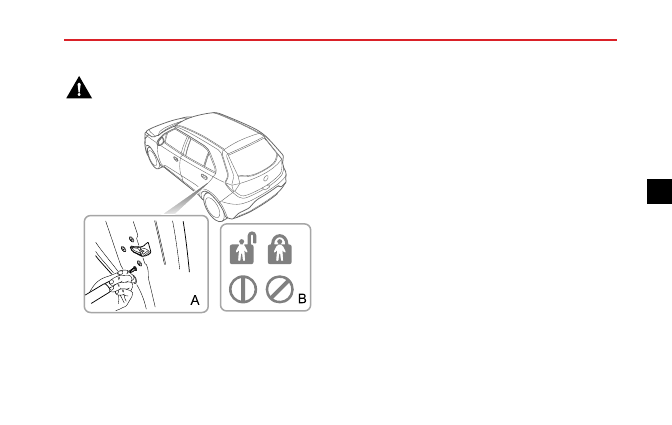New MG3. Service Manual - part 10

STARTING AND DRIVING
Child Proof Locks
NEVER leave children unsupervised in the
car.
Lock or Unlock the Child Proof Locks
• Open the relevant rear door, insert a flat-blade
screwdriver into the child lock slot (A).
• Turn the slot to the required position (B).
Note: Turn clockwise for left rear door, and turn
anti-clockwise for right rear door to enable. Turn back
to the vertical position to disable.
With the child proof locks engaged, the rear doors cannot
be opened from inside the car, but can be opened from
outside the car.
145
4